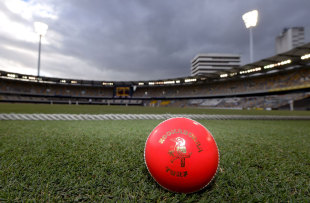Basil
Contributor
- Joined
- 6 Oct 2013
- Messages
- 4,888
- Reaction score
- 3,013
Australia Set to Host Day-night Test likely next year
[align=center]

[/align]
Australia and New Zealand appear almost certain to play the first day-night Test with a pink ball next year, after discussions progressed between the two countries last week. Adelaide and Hobart are the two possible venues for the inaugural match, which is likely to take place in November 2015, despite some concerns arising from players after pink-ball trials in the Sheffield Shield last summer.
A further round of day-night Shield games will be played this season and New Zealand are also set to undertake their own trials, though not in first-class cricket, as the inexorable push towards a day-night Test continues. Although some Shield players had no problems with the pink ball, others reported trouble seeing the ball or its seam, and there were concerns about how quickly it softened and lost its swing.
All three matches lasted into the fourth day and Cricket Australia's chief executive James Sutherland said the most encouraging aspect of the day-night trials was that the scores were consistent with the rest of the Shield season. However, he conceded that a pink ball was unlikely ever to behave exactly like a red ball and that "everyone is going to need to be accepting" of that.
"What we learnt from that last year is that there are no really obvious reasons why we shouldn't be continuing to progress with our intent around day-night Test match," Sutherland said. "We're certainly very excited about the concept and we're serious about really properly pushing ahead now.
"The pink ball, just like the white ball, doesn't behave exactly the same as the red ball. But ... the ball is the same for both teams. What we were pleased about was that in looking at the Shield results from this round that we played, the statistics in terms of runs and wickets were very much on par with average for the whole Shield season last year. There weren't any rogue behaviours.
"I don't think we're ever going to get to a stage where everyone is completely satisfied or comfortable with it. If we go back 30-odd years in time when the first ever day-night one-day internationals were played, I'm sure there was that same level of trepidation that some stakeholders including players might have had about day-night one-day cricket and white balls."
For Cricket Australia, the move is in part about maximising revenue. While the traditional Boxing Day and New Year's Tests in Melbourne and Sydney would remain unaffected, CA wants to bring more fans through the gates outside of summer holiday periods. The idea is that spectators would be more likely to attend Tests if they could turn up after work and see most of the day's play.
Then there is the major drawcard of boosting television audiences, as is already the case with the WACA Test, which attracts higher ratings because Perth's time-zone means the Test airs in the eastern states in prime time. However, Sutherland was at pains to suggest that it was not simply a money-making exercise and that Test cricket's health would be boosted by the move.
"Players are often quite concerned about changes in the way the game is played," he said. "That creates an all-the-more-important reason for us to consult with them so they understand where we're going and why it is.
"Whilst there may be some trepidation or concern about the pink ball and what impact it has on the game itself, I think it's really important that we continue to keep the big picture in mind and understand that in certain parts of the world the game of Test cricket is not as strong as it once was. If there are things we can do to enhance Test cricket to make it more popular, then that needs to be our ultimate aim. The last thing we want is to see Test cricket withering on the vine."
David White, the chief executive of New Zealand Cricket, said his discussions with Sutherland around the idea last week were positive and that NZC was keen to give day-night Test cricket a go. He said it was "critical" the pink ball behaved as closely as possible to the red ball, but that Test cricket had a history of adapting to suit the times.
"Since Test cricket was played in 1877 there have been significant changes, covered pitches, day limits, fielding restrictions, introduction of helmets, change of ball etc," White said. "I think as administrators we must keep evolving, improving the game and improving it for our stakeholders. We've got to be mindful of change but keep an open mind.
"I've spoken to the players and we've said once the trial [in New Zealand] is over and if they're satisfied we'll put it to them. The consultation with the players is key, we're very conscious of that."
The ICC approved day-night Test cricket in 2012, leaving the finer points up to the participating boards. David Richardson, the ICC's chief executive said he was pleased the concept appeared close to becoming a reality.
